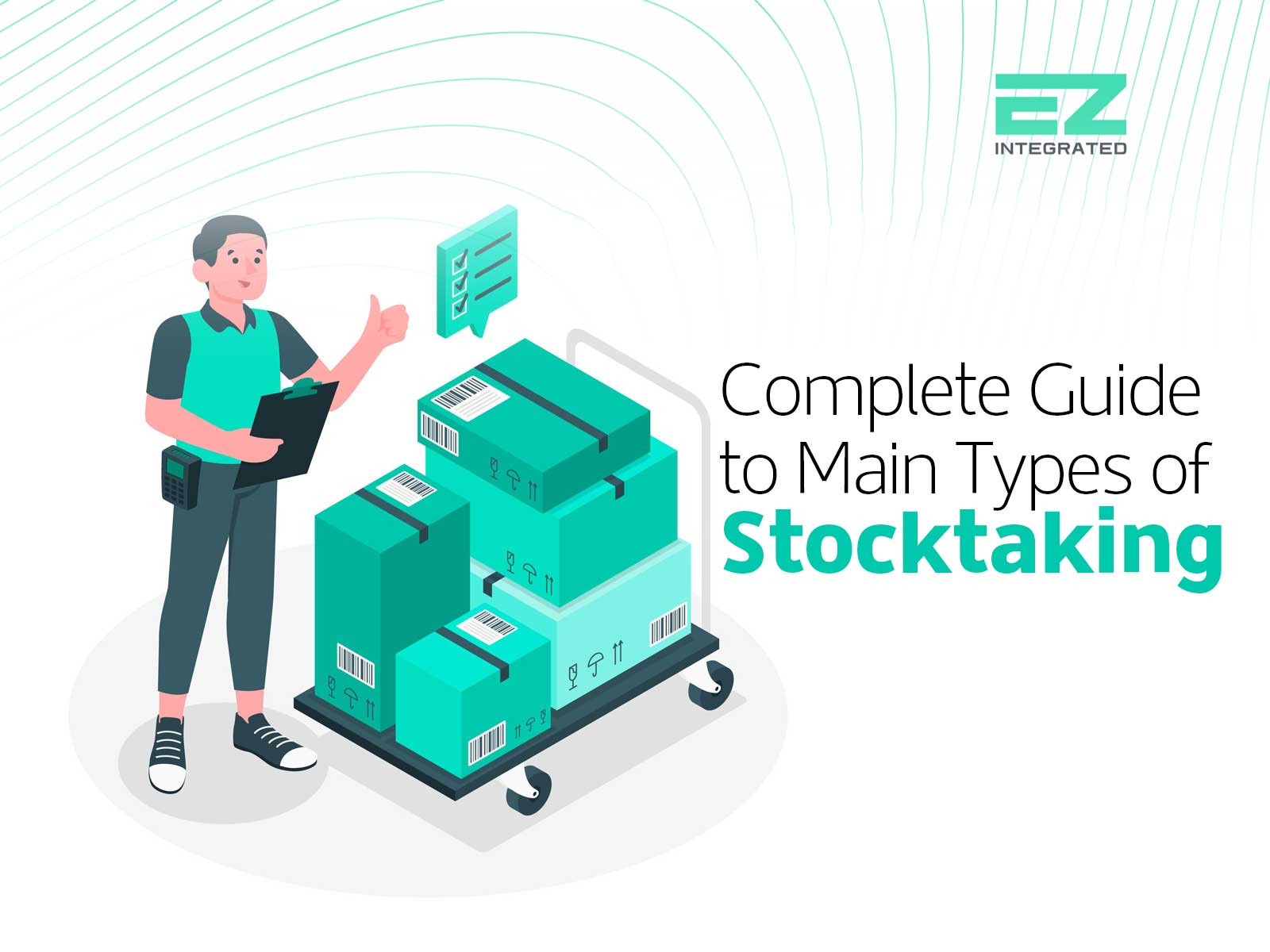The main types of stocktaking are essential for any business that manages physical inventory. They ensure accurate records, reduce waste, and support smarter financial and operational decisions.
In this guide, we explore the main types of stocktaking, who is responsible for the process, and how tools like CODEIT and EZ Integrated simplify inventory control with real-time reports.
What Is Stocktaking?
Stocktaking is the process of thoroughly reviewing the physical quantities available in storage and comparing them with accounting records or point-of-sale system data.
The purpose is not only to count items but also to verify financial data and assess warehouse efficiency. When done right, stocktaking helps reduce waste and improve budget control.
The Difference Between Stock and Stocktaking
Many confuse stocktaking with inventory. However, inventory refers to all goods, raw materials, and products a company owns.
Stocktaking, on the other hand, is the temporary review process that evaluates and compares inventory data with records. Stock is the content. Stocktaking is the tool that verifies it.
Also read: Top Point of Sale Types for Every Business in Saudi Arabia
Main Types of Stocktaking
There are several types of stocktaking based on company size and operations. Each type has its benefits and drawbacks. Here are the most common methods:
1. Periodic Inventory
This is conducted at the end of a financial year or on a fixed schedule. It suits small and medium businesses like bookstores and retail shops. However, errors may build up between counts.
2. Perpetual Inventory
Here, stock data is updated automatically with each sale or purchase. It’s ideal for fast-moving sectors like supermarkets and e-commerce. It offers real-time accuracy but may require high initial costs.
3. Spot Check or Surprise Inventory
Conducted without prior notice, this method verifies data accuracy and prevents fraud. Common in banks, pharmacies, and large warehouses, it improves control but may stress staff.
4. Cycle Counting
This involves checking part of the inventory at regular intervals instead of all at once. It’s useful for large-scale operations like factories and logistics firms. Some items may go unchecked for long.
5. Physical Inventory Count
Also known as manual counting, this involves counting all items in stock. It gives a complete picture, often done at year-end or when management changes. It is accurate but time-consuming.
6. FIFO-Based Stocktaking
First-In, First-Out ensures older stock is sold first. This method is essential for perishables like food and medicine. It reduces waste but requires tight control over expiration dates.
7. LIFO-Based Stocktaking
Last-In, First-Out issues the most recent stock first. This method is used in industries affected by inflation such as raw materials. It reflects current prices but may leave old stock unsold.
8. Electronic Inventory
This relies on technologies like barcodes or RFID to track items. It is widely used in e-commerce and large warehouses. It’s fast and accurate but may be costly for startups.
9. Consumption-Based Inventory
This type is based on actual usage rather than physical counts. It’s common in energy or chemical industries. It helps with forecasts but needs precise monitoring to avoid data gaps.
Who Handles the Stocktaking Process?
Inventory stocktaking is often shared among different teams within an organization:
- Accounting teams ensure data matches financial records.
- Warehouse staff conduct the physical count and verification.
- Internal or external auditors provide independent reviews for transparency.
How Does Stocktaking Software Make It Easier?
As product lines grow, manual stocktaking becomes impractical. Modern businesses can now rely on stocktaking software to automate and streamline the process.
CODEIT is an advanced point of sale software that supports most industries. It enables you to:
- Automate data entry and reduce errors
- Link inventory directly to the point of sale
- Generate instant reports on available stock
- Track items from receipt to sale
Also read: Inventory Management Software: Why It’s Essential for E-Invoicing
EZ Integrated: Smarter Integration with Your Stocktaking System
Improving your inventory process goes beyond choosing the right types of stocktaking. It also requires integration with billing and financial systems.
EZ Integrated provides smart linking tools with CODEIT, allowing you to:
- Match inventory data with sales in real time
- Issue e-invoices that comply with ZATCA regulations
- Access accurate financial reports for better planning
- Minimize manual errors and enhance transparency
EZ Integrated empowers your business by connecting stock control with invoicing to support long-term growth.
Get in touch today and discover how you can optimize your stocktaking process with our seamless integration solutions.
